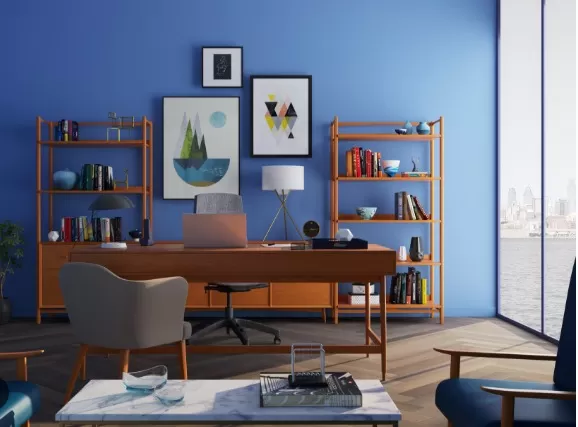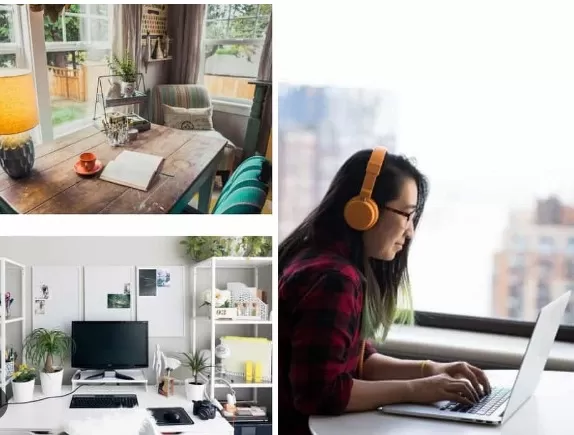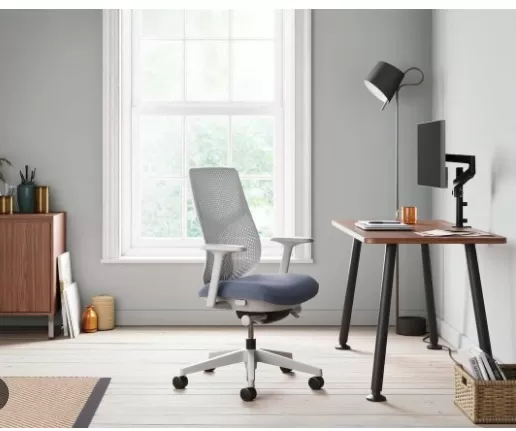Home Office Planning: Essential Guide. In today’s world, a functional and comfortable home office design is no longer seen as a luxury, but rather a necessity for many of us. With the rise of remote work and flexible schedules, having a dedicated space to work from home has become essential.
A well-designed home office provides the environment needed to be productive, focused, and comfortable. It allows for effective organization of work materials, proper ergonomics, and a conducive atmosphere for creativity and concentration. Recognizing the importance of a home office goes beyond aesthetics—it’s about creating a space that supports our professional needs and enhances our overall well-being.
Determining Your Home Office Needs: A Crucial Step in Designing Your Workspace

Identifying your needs is a crucial step in designing your home office space.
Consider the following factors to determine the type of workspace that will best suit your requirements:.
Work Frequency: Determine whether you work from home on a daily basis or only occasionally.
This will help you understand how much time and effort you should invest in creating a dedicated home office area.
Shared Space: Assess whether the home office will be exclusively yours or if it needs to accommodate other family members who may also require workspace.
Consider how to optimize the area to meet everyone’s needs without compromising productivity.
Required Equipment: Identify the essential equipment and tools necessary for your work.
This may include a computer, printer, scanner, phone, or specialized equipment specific to your profession. Make a list of the equipment you require to ensure that your home office design plan accommodates these needs.
Video Conferencing or Client Meetings: Determine if you will be frequently engaging in video conferences or hosting clients in your home office.
If so, consider the need for a professional backdrop, suitable lighting, and any additional equipment required for seamless communication.
By understanding your specific needs, you can develop a home office design plan that caters to your work requirements.
It allows you to create a functional and efficient workspace that supports productivity and enhances your work experience.
Selecting Your Ideal Home Office Space: Finding the Right Environment for Productivity
If you frequently work from home, establishing a dedicated office space can significantly enhance your work habits and productivity.
Not only can it help create a focused work environment, but if you meet the IRS requirements, it may also be eligible for a tax deduction. Consider the following tips to choose the perfect home office space that suits your needs:.
Dedicated and Distraction-Free: Look for a space that can be exclusively used as your home office.
Ideally, it should be a room with a door that can be closed, allowing you to separate yourself from the distractions of your home’s main Living Areas. This separation helps create a professional and focused atmosphere, increasing your ability to concentrate on your work.
Room for Growth: If your home office will be used by multiple family members for various purposes, ensure that the space is large enough to accommodate everyone comfortably.
Consider the specific needs and activities of each person and ensure the office space can facilitate individual productivity while still allowing for a sense of privacy.
Privacy and Productivity: Balance the need for a collaborative environment with the importance of privacy.
A home office should be private enough to facilitate work getting done without constant interruptions or distractions. Strike a balance between openness and privacy, allowing for effective collaboration while still maintaining individual focus.
Creative Solutions: If your home lacks a dedicated room for a home office, consider alternative options.
One possibility is converting a prefab shed into a backyard studio. This provides a separate and secluded space that can be customized to fit your specific needs, fostering a productive and inspiring work environment.
By carefully selecting your home office space, you can establish an environment that promotes concentration, productivity, and work-life balance.
Whether it’s a dedicated room with a door or a creatively converted space, finding the right space ensures you have the ideal foundation for a successful and efficient work-from-home experience.
So, take the time to choose your ideal home office space—one that is dedicated, distraction-free, and suits your specific requirements.
Remember to prioritize privacy while considering collaborative needs. By creating a designated workspace, you’ll be able to maximize your productivity and enjoy the benefits of a focused and efficient work environment.
Putting the Pieces Together: Key Components for a Satisfactory Home Office Design

After determining the purpose and location of your home office, it’s time to bring all the essential components together to create a space that fulfills its role effectively.
Consider incorporating the following key elements into your home office design to ensure its functionality and satisfaction:.
Ergonomic Furniture: Invest in ergonomic furniture to prioritize comfort and support while you work.
Choose an adjustable chair that promotes proper posture and reduces the risk of strain or injury. Additionally, select a desk or workstation that suits your work requirements and allows for efficient organization of essential items.
Adequate Lighting: Proper lighting is crucial for productivity and reducing eye strain.
Maximize natural light by positioning your workspace near windows. Additionally, include task lighting, such as a desk lamp, to provide focused illumination for specific work tasks.
Organizational Solutions: Create a clutter-free environment by incorporating effective organizational solutions.
Install shelves, cabinets, or drawers to store and organize office supplies, documents, and other materials. Consider using storage containers, trays, or desktop organizers to keep your workspace tidy and maximize efficiency.
Technology and Connectivity: Ensure your home office is equipped with the necessary technology for your work requirements.
This may include a reliable internet connection, a computer or laptop, a printer/scanner, and any specialized equipment or software needed for your profession. Arrange your technology setup in a way that promotes easy access and minimizes cable clutter.
Personalized Decor: Personalize your home office with decor that inspires and motivates you.
Display artwork, plants, or meaningful objects that create a pleasant and uplifting atmosphere. Customize your space to reflect your personality and create a positive work environment.
Privacy Solutions: If privacy is essential, consider incorporating privacy solutions such as curtains, blinds, or room dividers to create separation from other areas of your home.
This allows for concentration and limits distractions, contributing to a more focused work environment.
By integrating these key components into your home office design, you can create a workspace that enhances productivity, comfort, and satisfaction.
Tailor the design to your specific needs and preferences, ensuring that the space is conducive to your work style and fosters a positive and efficient work experience.
So, as you bring your home office design together, remember to prioritize ergonomics, lighting, organization, technology, personalized decor, and privacy solutions.
With careful consideration and thoughtful design, you can create a home office that supports your work goals, maximizes productivity, and brings satisfaction to your daily work routine.
Desk Selection: Finding the Perfect Fit for Your Work Style and Space
Choosing the right desk for your home office is crucial, and it depends on the nature of your work and the available space.
Consider the following factors to ensure that your desk meets your requirements:.
Work Type and Space: Assess the type of work you do and the physical space available in your home office.
If your work is primarily digital, you may not need a large desk surface. However, if you regularly work with print-outs, reference books, or require multiple work surfaces, opt for a desk with ample space to accommodate your needs.
Ergonomics: Sit at the desk and assess its comfort and functionality.
Ensure that the desk height is suitable for you and promotes good posture while you work. Additionally, consider if the desk has enough space to accommodate all the equipment you require, such as a computer, monitor, keyboard, and any other devices you use regularly.
Storage Solutions: Determine if you need built-in storage for easy access to files and supplies.
If you frequently access physical documents or need to store office essentials, consider a desk that includes drawers or shelves. This ensures that everything is within reach and keeps your workspace organized.
Style and Budget: Consider your personal style and budget when choosing a desk.
There are various styles available, from streamlined and modern to classic and traditional. Select a desk that aligns with your aesthetic preferences while still meeting your functional requirements.
Remember, there are also DIY options available if you prefer a more customized approach.
Take the time to explore different desk options that suit your work style, space, and personal preferences.
Visit furniture stores or browse online to find a desk that meets your needs. Ensure that the desk is the right fit for your height, has sufficient workspace, and accommodates all the equipment and storage solutions you require.
By carefully selecting the right desk, you can create a comfortable and efficient workspace that supports your productivity and work satisfaction.
So, when choosing a desk for your home office, consider the nature of your work, available space, ergonomics, storage needs, style, and budget.
Test the desk to ensure it meets your requirements, and remember that DIY options are available if you prefer a more customized solution. With the perfect desk, you’ll have a functional and inviting workspace that enhances your work experience.
Chair Selection: Prioritizing Comfort and Functionality in Your Home Office Design

When designing your home office, choosing the right chair is of utmost importance.
While aesthetics may be enticing, it is essential to focus on comfort and functionality. Consider the following factors to ensure your chair meets your needs:.
Sufficient Depth: Look for a chair that offers sufficient depth, ensuring that the seat supports your thighs without touching the back of your knees.
This prevents discomfort and promotes proper circulation while you work.
Lumbar Support: If you are prone to lower-back pain, prioritize a chair that provides adequate lumbar support.
Proper lumbar support helps maintain a healthy spinal posture and reduces the risk of strain or discomfort during long hours of sitting.
Adjustability: If possible, opt for a chair with adjustable features.
This includes the ability to adjust the seat height, armrest height, and backrest angle. An adjustable chair allows you to customize the settings to your body’s needs, ensuring optimal comfort and support throughout the day.
Appropriate Height: Ensure that the chair’s height is suitable for your desk or worktable.
Your feet should rest comfortably on the floor or a footrest, with your knees forming a 90-degree angle. This promotes good posture and reduces strain on your back and legs.
Comfort Over Looks: When faced with a choice between comfort and aesthetics, prioritize comfort.
While a visually appealing chair may be tempting, remember that your productivity and well-being are enhanced when you are comfortable during long hours of work.
Budget Considerations: There are excellent chair options available in the $100 to $200 range that provide both comfort and quality.
Take your time to research and test different chairs within your budget to find the one that best suits your needs.
Remember that a comfortable chair plays a vital role in promoting productivity and reducing the risk of discomfort or health issues associated with prolonged sitting.
Take the time to select a chair that supports your body properly and enhances your work experience.
So, when choosing a chair for your home office, prioritize comfort, depth, lumbar support, adjustability, and appropriate height.
Don’t hesitate to invest in a chair that offers the necessary features to promote a healthy and comfortable work environment. By prioritizing comfort over looks, you’ll be able to work more efficiently and enjoy a more productive home office experience.
*The information is for reference only.